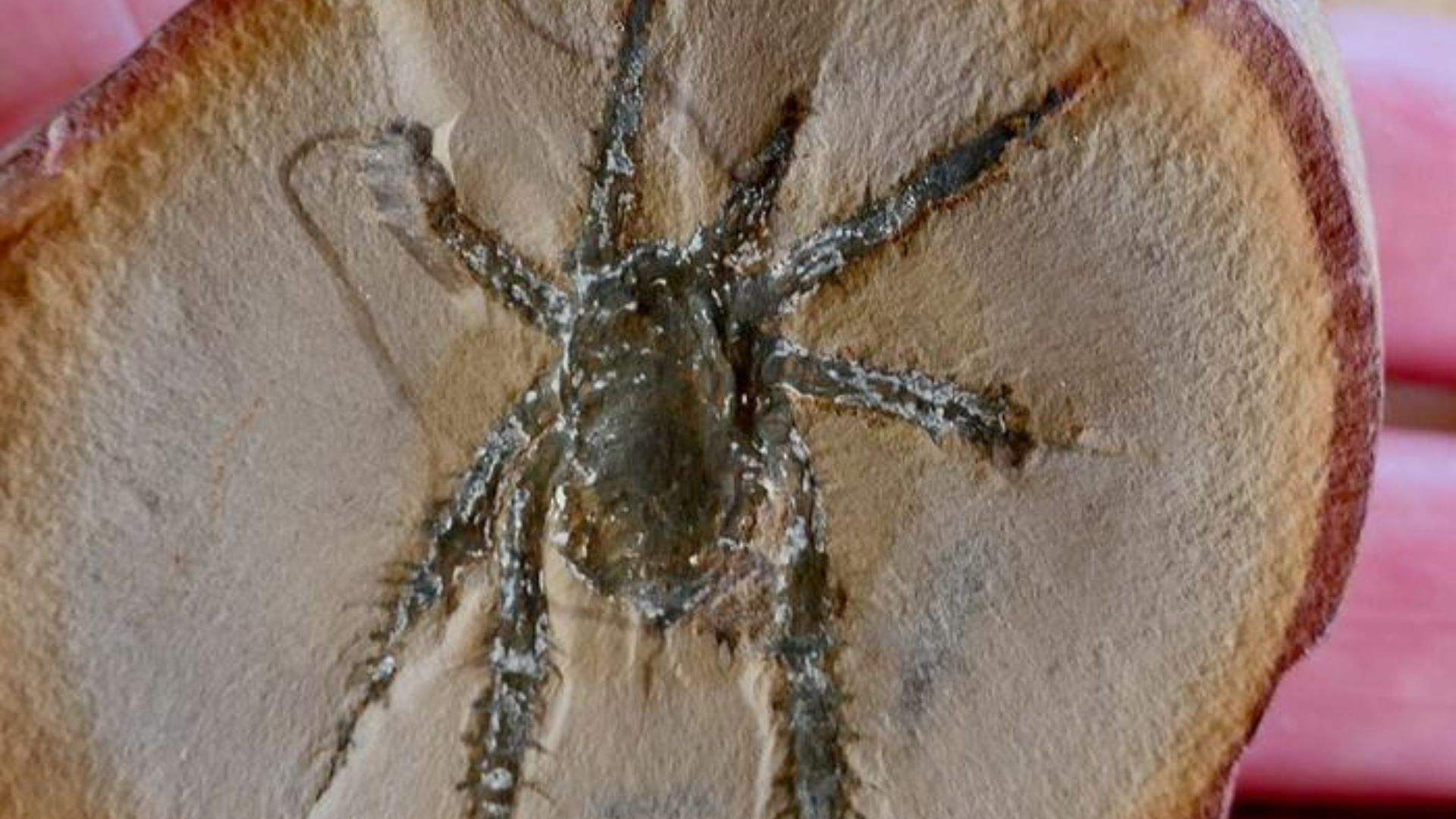Once a spider-like species that crawled through the Carboniferous coal forests of North America and Europe have now been traced back to an ancient species of arachnid named Douglassarachne acanthopoda.
A team of researchers from the University of Kansas, the Natural Museum of London, and the Museum für Naturkunde Berlin analyzed a fossil discovered by Bob Masek in the 1980s. It was later acquired by the David and Sandra Douglass Collection.
This fossil was examined recently to understand more about the diversity and evolutionary history of arachnids during the Carboniferous period.
Ancient arachnid fossil roughly 308 million years old
Douglassarachne acanthopoda represented distinct features such as robust and spiny legs which scientists deem an important specimen for studying studying ancient arachnid adaptations and their ecological roles in prehistoric environments.
“Douglassarachne acanthopoda comes from the famous Mazon Creek locality in Illinois and is about 308 million years old,” stated lead author Paul Selden from the University of Kansas and the Natural History Museum of London.
“This compact arachnid had a body length of about 1.5 centimeters and is characterized by its remarkably robust and spiny legs—such that it is quite unlike any other arachnid known, living or extinct.”
The analysis aimed to help paleontologists understand the variety of body plans that existed among arachnids and how these forms evolved or went extinct over time.
The arachnid fossil was found in the clay-ironstone concretion, a type of rock formation that is known to occasionally preserve fine details of ancient species.
It was examined at the Field Museum of Natural History in Chicago where researchers surmised that the mouthparts were not clearly visible and thus making it challenging to characterize the species within a specific arachnid order.
Some facets made the characterization inconclusive
Scientists noted that despite the clear visibility of legs, the other parts made the characterization inconclusive.
They also noted that Carboniferous coal measures played a crucial role by providing a rich source of well-preserved fossils, including the newly described arachnid species. These rock layers offer valuable insights into the diversity and evolution of ancient life during the Carboniferous period.
According to the statement, the fossil arachnids represented the first time in Earth’s history when most living groups of arachnids occurred together.
“Spiders were a rather rare group, only known at that time from primitive lineages, and they shared these ecosystems with various arachnids which have long since died out,” stated co-author Jason Dunlop from the Museum für Naturkunde Berlin.
“Douglassarachne acanthopoda is a particularly impressive example of one of these extinct forms. The fossil’s very spiny legs are reminiscent of some modern harvestmen, but its body plan is quite different from a harvestman or any other known arachnid group.”
He said that the fossil could belong to a wider group, which includes spiders, whip spiders and whip scorpions. However, it was confirmed that these spiny arachnids appear to come from a time when arachnids were experimenting with a range of different body plans, whatever its evolutionary affinities might have been.
“Some of these later became extinct, perhaps during the so-called ‘Carboniferous Rainforest Collapse,’ a time shortly after the age of Mazon Creek when the coal forests began to fragment and die off. Or perhaps these strange arachnids clung on until the end Permian mass extinction?”
ABOUT THE EDITOR
Shubhangi Dua As a quirky and imaginative multi-media journalist with a Masters in Magazine Journalism, I’m always cooking up fresh ideas and finding innovative ways to tell stories. I’ve dabbled in various realms of media, from wielding a pen as a writer to capturing moments as a photographer, and even strategizing on social media. With my creative spirit and eye for detail, I’ve worked across the dynamic landscape of multimedia journalism and written about sports, lifestyle, art, culture, health and wellbeing at Further Magazine, Alt.Cardiff and The Hindu. I’m on a mission to create a media landscape that’s as diverse as a spotify playlist. From India to Wales and now England, my journey has been filled with adventures that inspire my paintings, cooking, and writing.

Dr. Thomas Hughes is a UK-based scientist and science communicator who makes complex topics accessible to readers. His articles explore breakthroughs in various scientific disciplines, from space exploration to cutting-edge research.








